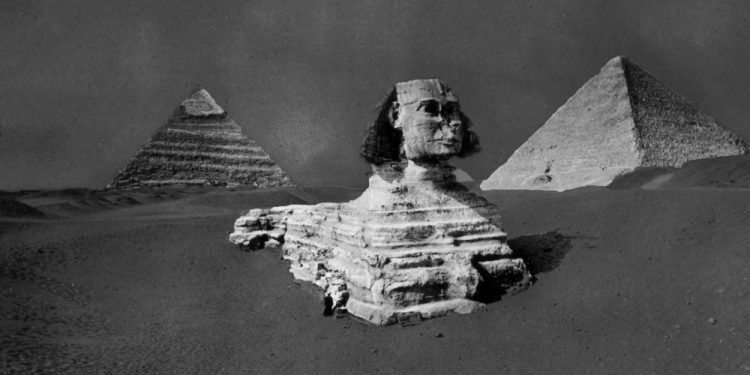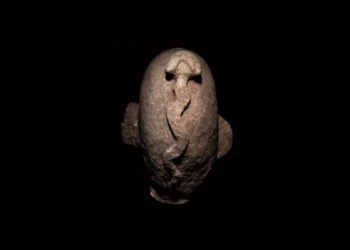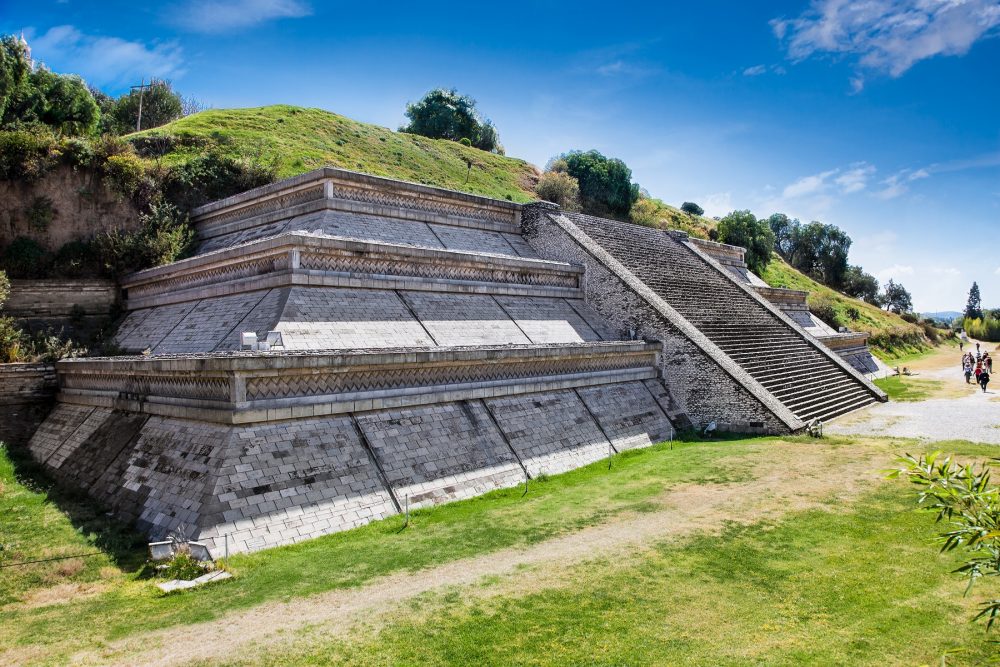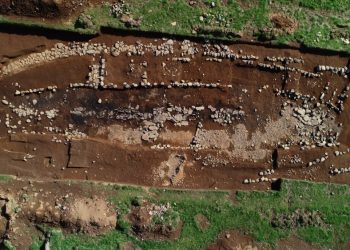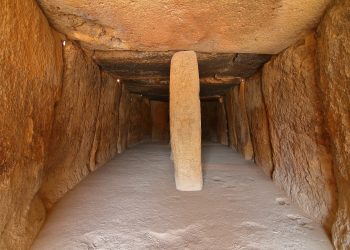Although the pyramids of Giza are without a doubt one of the greatest, most impressive structures of the ancient world, one cannot write of the pyramids, especially The Great Pyramid of Giza, without mentioning the Great Sphinx.
This ancient statue is perhaps the statue of all, a rock star of the ancient world if you will, and there is scarcely a person in the world who is unfamiliar with the gigantic statue carved in the shape of a lion’s body and a human head. The massive Sphinx is truly a rock star carved in stone and is one that guards the pyramids of Giza.
Despite the burden the Great Sphinx carries as guardian of the most impressive structures of the ancient world, the Sphinx itself is shrouded in mystery. In fact, we could say that the Sphinx is synonymous with mystery.
The Great Sphinx and its Great Secret
The Sphinx is older than old. It is so ancient that already to the ancient Egyptians, the Sphinx was considered a relic of the past. Therefore, it is one of the most mysterious statues ever carved on the planet’s surface.
Up until 1926, almost one hundred years ago, the massive statue was buried up to its neck in the fine sand of the Giza plateau, and visitors speculated about what might lie underneath. Today, archaeologists and visitors know what the statue looks like in its entirety. But nonetheless, the Sphinx continues safeguarding its most precious secrets.
We can write of two unique theories of the Sphinx, its origin and its purpose.
The mainstream view
From a mainstream point of view, the Great Sphinx is undoubtedly part of the pyramid complex of Pharaoh Khafre. It has long been a source of consternation among Egyptologists and archaeologists as to who built the Sphinx. Hawass, Lehner, and others agree that it was Pharaoh Khafre who ruled Egypt during the Old Kingdom, which began around 2,600 B.C.
Archeologists Ahmed Fakhry explains that no other king can boast of such a monument, but the carving of the Sphinx may not have been entirely on purpose or even planned.
It is believed that after the Pyramids were built — and many materials were sourced right next to the monuments — a large boulder was left in front of the pyramids. The massive rock was too great to remove, so the King decided to carve a mighty statue, resulting in the Great Sphinx. That is one theory.
As Fakhry reveals in his book the Pyramids, a mass of softer rock was left behind after the workers sourced the best, hardest stone for the surrounding monuments. This massive boulder must have been unsightly for the King. The mass left behind probably resembles a lion’s shape, which may have led the royal architects of Khafre to envision carving a Sphinx. Soon enough, the Great Sphinx, 20 meters high and 57 meters long, was carved from the living rock without additional masonry.
The Alternative view
But what if it wasn’t Khafre who commissioned the Sphinx? What if, as some experts believe, the Sphinx predates not only Khafre but the entire Fourth Dynasty?
One of my favorite explanations of the mystery surrounding the Sphinx comes from two excellent Egyptologists, Miroslav Verner and Salim Hassan.
The latter excavated and studied the Sphinx in 1949 and made a detailed description of his discovery.
Hassan wrote, summing up the problem of dating the Sphinx in the following paragraph:
Taking all things into consideration, it seems that we must give the credit of erecting this, the world’s most wonderful statue, to Khafre, but always with this reservation: that there is not one single contemporary inscription which connects the Sphinx with Khafre; so, sound as it may appear, we must treat the evidence as circumstantial, until such time as a lucky turn of the spade of the excavator will reveal to the world a definite reference to the erection of the Sphinx.
Miroslav Verner sums up just how mysterious the Great Sphinx is and how little we know about it in the next paragraph;
The Great Sphinx of Giza is more than simply a symbol of ancient and modern Egypt. It is the very embodiment of antiquity and mystery itself. Over the centuries it has fired the imaginations of poets and scientists, adventurers and travelers. Although it has often been measured, described, investigated using the most up-to-date scientific-technical means, and discussed at special scientific conferences, fundamental questions remain unanswered: Who built it, when, and why? (p.234)
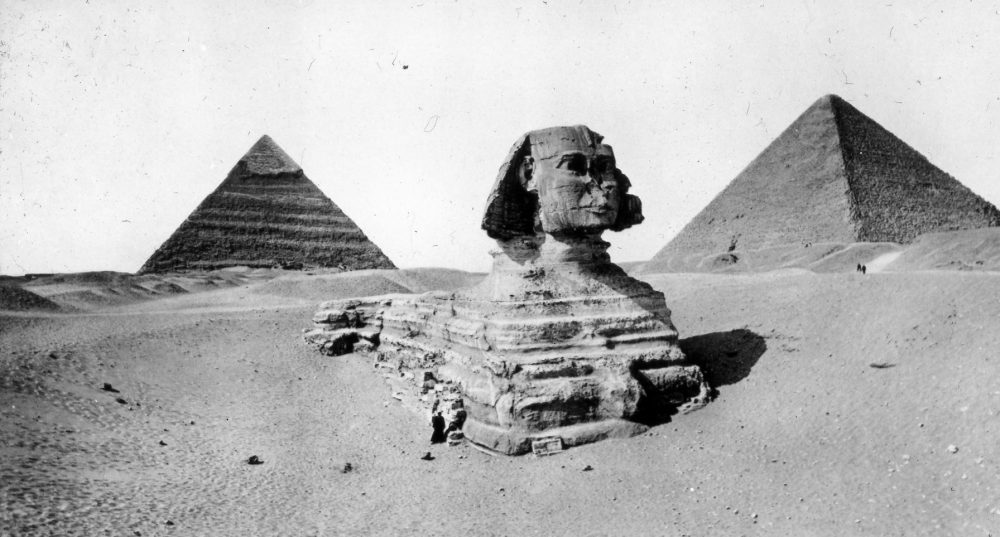
The first Restoration of the Sphinx took place 3,500 Years Ago
One cannot fully understand how old the Sphinx is until we realize that the first time the ancient statue was restored was 3,500 years ago.
Evidence shows that the statue was restored for the first time around 3,500 years ago. Unfortunately, the ancient Egyptians abandoned the Giza necropolis sometime in history, and eventually, the Sphinx was buried beneath the sands.
Around 1,400 BC, Thutmose IV made a great effort to excavate and restore the statue after many failures. His excavations revealed the statue’s front paws, precisely where he placed the Dream Stele.
The Sphinx would eventually become covered in sand again, remaining so until Ramesses II the Great excavated it once more between 1279 and 1213 BC).
Mark Lehner had previously asserted that the Sphinx may have been restored even earlier, during the Old Kingdom, between 2686 and 2184 BC. However, he eventually recanted his viewpoint.
Secret tunnels and an underground world
Research conducted by Ain Shams University and the SRI of California in 1977 uncovered anomalies at the Sphinx. These included a cavity Sphinx’s in front of the Sphinx’s forepaws. In addition, SRI conducted a resistivity survey and acoustic sounding tests, discovering numerous oddities beneath and around the ancient monument.
Japan surveyed the Sphinx with electromagnetic sounding techniques in 1987. In addition to a tunnel beneath the monument, scientists discovered a water pocket near the Sphinx’s southern paw and another cavity near its north hind paw. Curiously, their research also indicated evidence of a groove extending beneath the body of the ancient monument.
Several grooves similar to those on the southern end of the Sphinx have been observed by scientists from Waseda University. It appears that the grooves extend under the body. This implies that there is a tunnel under the Sphinx. Moreover, a geometrical cavity measuring 1m x 1.5m x 7m has been detected near the elbow, possibly containing granite or metal.
In addition, scientists discovered similar groves north of the statue, which indicate there may be tunnels beneath the Giza monuments.
Why censorship?
From 1925 to 1936, Baraize excavated the Sphinx and discovered a tunnel that he explored before the entry was censured. Unfortunately, because the French engineer’s work was lost, no written account of what he found exists.
These studies indicate that there is more to the Sphinx than what meets the eye. Many similar tunnels and perhaps even “underground chambers” can be found across the plateau. There is an example of this in the Osiris shaft, a narrow burial shaft that leads to three levels for a tomb and below it a floodplain; Selim Hassan originally described it. Hawass led a team that conducted a thorough excavation in 1999.
The causeway starts at the link between the Sphinx and the Second Pyramid before descending a hundred feet below the plateau in several places. Water filled its bottom chamber, giving it its name.
Edgar Cayce, an American clairvoyant, claimed that an ancient library lay beneath the statue. The so-called Hall of Records recorded Earth’s ancient past, but mainstream experts contend it never existed.
Join the discussion and participate in awesome giveaways in our mobile Telegram group. Join Curiosmos on Telegram Today. t.me/Curiosmos



